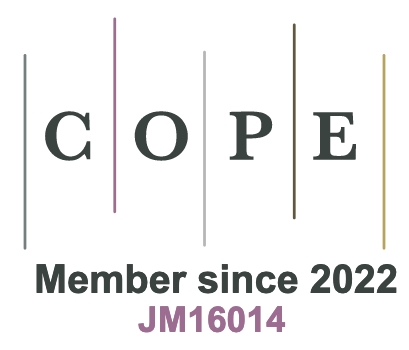Borides as promising M2AX phase materials with high elastic modulus using machine learning and optimization
Abstract
There is growing interest in novel MAX phase materials for various applications ranging from aircraft/spacecraft and defense to energy and electronics due to their unique combination of metallic and ceramic properties. Traditional materials discovery has mostly relied on human intuition coupled with rigorous experiments; however, this approach has been time-consuming and inefficient. Over the last few decades, advances in fundamental and data-driven approaches such as first-principles modeling, materials informatics, machine learning and optimization, coupled with an exponential rise in computational power, have enabled faster and more efficient materials discovery. Here, we present an exploration of high elastic modulus novel boride-based M2AX phase materials using a combination of the aforementioned methods. Specifically, an ensemble of gradient boosted machine learning models was developed to predict the elastic modulus from informatics-based structural features by leveraging a dataset of Density Functional Theory (DFT)-predicted elastic moduli for 223 M2AX phase materials (carbides and nitrides). Using Bayesian optimization, inverse modeling was carried out to maximize the model-predicted elastic modulus by identifying the optimal features. Finally, model predictions for 1,035 candidate M2AX materials were generated to compare their features with the optimal features to identify potential novel promising materials. We found that Ta2PB, Nb2PB, and V2PB have similar high elastic moduli (371.7, 351.5, and 347.4 GPa) to their carbide counterparts (364.7, 357.7, and 373.5 GPa), and our results support the possibility that borides can be a viable tertiary element for M2AX phases.
Keywords
INTRODUCTION
MAX phases are a group of materials that have drawn increasing interest in recent years due to their unique combination of metallic and ceramic properties[1]. These materials tend to follow a composition of Mn+1AXn and are typically carbides and nitrides with a layered, ternary composition[2,3]. MAX phases exhibit ceramic properties through their high strength and resistance to oxidation up to 1,400 °C, and high elastic stiffness[4,5]. Additionally, they display metallic properties of thermal and electrical conductivity, machinability, and high damage tolerance[1,4,6]. Together, these properties make MAX phases highly promising nanolaminates for aerospace, defense, and energy applications. Specifically, MAX phases can act as structural materials or coatings for high-temperature applications such as gas turbine engines or gas burner nozzles due to their ability to withstand high temperatures for long periods of time[4,7]. Due to their superior oxidation and corrosion resistance and radiation tolerance, MAX phases have also shown potential as accident-tolerant fuel cladding in nuclear reactors[8]. Chirica et al. reported that when used as catalysts, MAX phases can activate C−H or C−O bonds in various chemical reactions such as methanol formation, dry reforming, CO oxidation or water-gas shift reactions[9]. Given the diverse applications of MAX phases, they are indeed worthy of further exploration for new materials discovery.
In the past, materials science has relied on making small structural or compositional adjustments to known materials in order to discover novel alternatives. While this method has produced results, it is costly, time-consuming, and inefficient. In recent decades, the process of materials discovery has been accelerated due to the increase in computational processing power, formation and availability of materials databases, and development of new modeling/data science methodologies[10-20]. In terms of methodology development, Density Functional Theory (DFT) simulations have long-established the electronic structure of materials and their properties. Use of machine learning (ML) and optimization approaches to the design of novel materials has been a groundbreaking shift in the field[21]. ML has already been applied for the development of novel materials in numerous domains and has produced exceptional results. For example, Li et al. utilized it to find an aluminum-lithium alloy with a 12.6% higher specific modulus and a similar specific strength compared to the typically used 2195-T8 alloy[22]. Similarly, Mohanty et al. explored niobium-based alloys through ML and Bayesian optimization (BO) and found two new niobium alloys that maintain high strength from 550 to 2,500 °C based on calculation of phase diagrams[23].
In the present study, we utilized ML and optimization approaches to search for new M2AX phase materials with high elastic moduli which could be used for future materials development. Specifically, we utilized a Matminer dataset generated by Cover et al. which provided data on 223 M2AX phase materials including elastic, shear, and bulk moduli, elastic constants, distances between their atoms, lattice parameters, and chemical formulas[24]. We applied Matminer featurizers to the compositional formulas to generate various structural features. We developed an ensemble of gradient boosted ML models to predict the elastic modulus from those informatics-based structural features. We also carried out inverse modeling using BO to maximize the model-predicted elastic modulus by identifying the optimal features. Finally, we generated model predictions for 1,035 various M2AX materials to compare their features with the optimal features to identify potential novel materials. Our work indicates that Ta2PB, Nb2PB, and V2PB have similar high elastic moduli to their carbide counterparts, which supports the possibility that borides can be a viable tertiary element for M2AX phases.
MATERIALS AND METHODS
Preliminary data analysis and feature creation
The M2AX dataset used in this work included elastic modulus data from 223 DFT simulations conducted by Cover et al. A histogram and the statistics of the elastic modulus data are shown in Figure 1[24]. The data ranges from 46 to 376 GPa, with a mean of 217 GPa, a standard deviation of 61 GPa, a median of 217 GPa, and an interquartile range (IQR) of 90 GPa. The wide range and fairly high standard deviation provide an excellent opportunity to capture the diversity in this elastic modulus dataset through ML modeling. The Shapiro-Wilk normality test indicated that the data closely resembles the Gaussian distribution (P = 0.667). Other information in the dataset includes structural parameters (a: Lattice parameter a in angstroms, c: lattice parameter c in angstroms, 5 elastic constants of the M2AX material specific to hexagonal materials, d_ma: distance from M atom to A atom, d_mx: distance from M atom to X atom) and the formula.
Figure 1. Histogram and summary statistics for elastic modulus data from the DFT dataset for the 223 M2AX materials[24]. DFT: Density Functional Theory.
Using the StrToComposition Matminer featurizer[10], formulas from the original dataset were converted to a usable format; e.g., Sc2AlC is converted to (Sc, Al, C). The developed ML model is specifically applicable to predicting the elastic modulus of the 211 MAX phase and does not account for other compositions/phase effects. Next, the ElementProperty Matminer featurizer[10] was used to generate 132 structural features for each compound. Examples of these features include range GSmagmom, minimum SpaceGroupNumber, and mean NUnfilled. The original parameters or features provided in the DFT dataset were not used as the goal was for the model to be able to predict the elastic modulus of novel materials beyond this dataset.
Feature selection and ensemble of models
Data was split into 80% training and 20% validation. Initially, an XGBoost (XGB) regressor model was developed with 5-fold cross validation using all 132 features. Hyperparameter optimization was conducted using the number of estimators, learning rate, maximum depth, and minimum loss reduction. The maximum depth was restricted to 8 to avoid overfitting. Performance of the XGB models is influenced by the random state used to split the data into training and validation; hence, four different random states (42, 0, 14, and 28) were used to develop four separate XGB models. Permutation importance for each model was calculated and is shown in Figure 2 for the top 15 features. Starting from the highest importance values, models were developed with an increasing number of features until no significant improvement in validation root mean square error (RMSE) and R2 was observed [Figure 3]. While selecting the features for each model, any additional feature with high correlation (threshold = 0.8) with previously included features was not considered. Typically, performance of these XGB models reaches a plateau after including 6-8 features. Finally, a list of eight features was selected based on their common appearance across the four models, and the models were re-developed using those eight features at the four different random states. The final list of selected features includes: (1) maximum GSvolume_pa, (2) mean MendeleevNumber, (3) maximum NdValence, (4) minimum Electronegativity, (5) mean NUnfilled, (6) mean MeltingT, (7) mean Column, and (8) range SpaceGroupNumber. The distribution and statistics of these eight features are shown in Figure 4 and their cross-correlations are shown in Figure 5.
Figure 2. Permutation importance plots for the top 15 features for XGB models developed using all 132 features with four random states (RS = 42, 0, 14, 28) to predict the elastic modulus for M2AX materials. These importances were used to explore stepwise addition of features for each model. XGB: XGBoost; RS: random states.
Figure 3. Effect of stepwise feature addition on XGB model performance in terms of validation RMSE and R2. Four random states
Figure 4. Histogram and summary statistics for the final eight selected features used in model development.
RESULTS AND DISCUSSION
Parity plots for the four models are shown in Figure 6 for the validation datasets. Parity plots for these models and their ensemble covering the entire dataset (training and validation) are provided in the Supplementary Figure 1. This unique approach of selecting features from a collection (ensemble) of models is expected to make the overall model robust, avoid overfitting, and capture variations in the overall dataset. A further advantage of developing four ML models (instead of a single model that is typically developed) is that the ensemble of these four models can now be used to improve overall prediction accuracy, while ensuring that the overall model has a wide grasp of the majority of the dataset. The ensemble approach averages predictions from these models to produce a final prediction for any given material, which is expected to improve the robustness of the predictions, dampen the effect of outlier predictions from any single model, and make the predictions less sensitive to any one specific way of data splitting. Details of the four XGB models (data splitting, hyperparameters, and metrics for validation) are presented in Table 1. We acknowledge that the development of multiple (ensemble) ML models, although desired, can be time-consuming for large datasets.
Figure 6. Parity plots for validation datasets using the ensemble of XGB models developed at RS of 42, 0, 14, and 28. XGB: XGBoost; RS: random states; RMSE: root mean square error.
Hyperparameters and metrics for the ensemble of XGB models developed at multiple random states to predict elastic modulus for M2AX materials
| Category | Description | Model 1 | Model 2 | Model 3 | Model 4 |
| Data splitting | Training: validation Random state | 80:20 42 | 80:20 0 | 80:20 14 | 80:20 28 |
| Hyperparameters | Number of estimators Learning rate Maximum depth Minimum split loss | 75 0.1 6 5 | 100 0.1 6 1 | 100 0.1 6 5 | 100 0.1 6 3 |
| Metrics for validation | R2 MAE MSE RMSE | 0.892 16.9 484 22.0 | 0.790 19.6 690 26.3 | 0.795 20.2 653 25.5 | 0.721 25.3 1,090 33.1 |
Finally, Figure 7 shows the partial dependence plots generated using the ensemble of XGB models. Here, each of the eight features was varied from its minimum to maximum value in 30 steps while keeping the seven remaining features at their mean values. Although there might be restrictions on whether the features can be varied independently, this type of analysis can provide helpful directions toward identifying better materials. For example, low maximum GSvolume_pa, low maximum NdValence, moderate mean MendeleevNumber, low minimum Electronegativity, high mean NUnfilled, high mean MeltingT, high mean Column, and high range SpaceGroupNumber might result in M2AX materials with high elastic modulus.
Figure 7. Partial dependence plots showing the effect of each feature on predicted elastic modulus using the ensemble of XGB models. Dashed lines indicate the mean values for the dataset. XGB: XGBoost.
Bayesian optimization to identify best feature values
To explore promising M2AX materials with high elastic moduli, we implemented BO using the gp_minimize function in scikit-opt[25]. Here, the objective was to identify feature values corresponding to the maximum predicted elastic modulus. An ensemble of the four XGB models was used in the objective function to get an average elastic modulus. As the gp_minimize function minimizes the objective function, the model prediction was subtracted from 0 inside the objective function. Note that at every iteration of BO, the values that the optimizer generated for maximum NdValence and range SpaceGroupNumber features were typecasted as integers since they are supposed to be represented as integers in the data. As shown in Figure 8, we explored various acquisition functions [expected improvement (EI), probability improvement (PI), lower confidence bound (LCB), gp_hedge] and a range of initial points prior to the Gaussian fitting. For each acquisition function, five runs were completed with the number of initial points ranging from 10 to 50. The number of function evaluations after the initial calls was kept constant at 150; therefore, the total number of function evaluations is equal to 150 + the number of initial points. There was no clear pattern in terms of the acquisition function used, but typically the optimizer has a better chance of finding an optimum with more initial points. With the full range for each feature from its minimum to maximum value, the optimizer resulted in the best prediction of 371.7 GPa, which was slightly lower than the highest elastic modulus predicted from the dataset (373.5 GPa for V2PC). Therefore, narrower feature ranges around V2PC were also explored, which identified improved maximum values for elastic modulus (± 20% resulted in 373.4 GPa, whereas ± 10% resulted in 374.2 GPa). The corresponding best feature values are also shown in Figure 8.
Figure 8. Comparison of acquisition functions and number of initial function evaluations in Bayesian optimization with an ensemble of XGB models, with various ranges (or bounds) for the features (A) min to max, (B) ± 20% from V2PC, and (C) ± 10% from V2PC. Features corresponding to the maximum predicted elastic modulus are shown in the table. XGB: XGBoost; EI: expected improvement; PI: probability improvement; LCB: lower confidence bound.
Model-driven exploration of novel materials
To identify M2AX materials with high elastic moduli, we generated 1035 combinations of M, A, and X elements. Elements were selected for each category based on their proximity to commonly used elements in M2AX phases. We chose 15 early transition metals (M = V, W, Ta, Zr, Hf, Nb, Mo, Cr, Ti, Sc, Y, Mn, Re, Tc, La), 23 group A elements (A = Al, P, Te, Si, Ga, Ge, As, Cd, Sn, In, Tl, Pb, S, Sb, Bi, Zn, Se, Fe, Co, Ni, Cu, Au, Ir), and three reactive nonmetals / metalloids (X = N, C, B). The same featurization process was used to create the 132 features for the 1,035 materials; however, only the eight selected features in the ML models are used in the analysis presented below.
As a first step, the best feature values from BO were compared against the feature values for all 1,035 materials. A least square difference between the BO feature values and materials features values was calculated for each feature, and then summed over all features to indicate a normalized difference estimate for each material. A small difference is supposed to indicate a potentially promising material with a high elastic modulus. Top ten materials with smallest differences include (V2PC - 0.005, Ta2PB - 0.012,
The ensemble of XGB models were then used to generate predictions for the 1,035 materials. A heatmap of the predicted values is shown in Figure 9, where the information is separated into three different types of materials - Nitrides, Carbides, and Borides. Top ten materials with high elastic moduli include
Figure 9. Heatmap representation of the predicted elastic modulus values for screened 1,035 M2AX materials using the ensemble of XGB models. XGB: XGBoost.
Comparison of materials with high elastic modulus based on theory (DFT[24,26]), BO prediction, and machine learning models (ensemble of XGB models)
| Features/Target | Best compound from DFT: V2PC | 2nd best compound from DFT: Ta2PC | 3rd best compound from DFT: Nb2PC | Optimal values from Bayesian optimization | Best new compound from ML exploration: Ta2PB | 2nd best new compound from ML exploration: Nb2PB | 3rd best new compound from ML exploration: V2PB |
| Maximum GsVolume_pa | 22.570 | 22.570 | 22.570 | 22.04 | 22.570 | 22.570 | 22.570 |
| Maximum NdValence | 3 | 3 | 4 | 3 | 3 | 4 | 3 |
| Mean Mendeleev number | 63 | 64 | 63.5 | 62.82 | 62.75 | 62.25 | 61.75 |
| Minimum electronegativity | 1.63 | 1.5 | 1.6 | 1.631 | 1.5 | 1.6 | 1.63 |
| Mean nunfilled | 5.25 | 5.25 | 5.25 | 5.327 | 5.5 | 5.5 | 5.5 |
| Mean MeltingT | 2,126.6 | 2,680.1 | 2,410.1 | 2,214.8 | 2,311.3 | 2,041.3 | 1,757.8 |
| Mean Column | 9.75 | 9.75 | 9.75 | 9.557 | 9.5 | 9.5 | 9.5 |
| Range space group number | 227 | 227 | 227 | 217 | 227 | 227 | 227 |
| Elastic modulus (GPa) | 376 (DFT[24]) 373.5 (ML) | 375 (DFT[24]) 364.7 (ML) | 358 (DFT[24]) 355 (DFT[26]) 357.7 (ML) | 374.2 (BO) | 371.7 (ML) | 351.5 (ML) 355 (DFT[26]) | 347.4 (ML) |
Finally, we also evaluated and confirmed the stability of these borides based on their predicted energy above convex hull[15,16] using CrabNet. CrabNet is a compositionally restricted attention-based network that predicts material properties, including the energy above the convex hull, using only compositional information[16]. Since we do not have the structural information for the suggested MAX phase borides (Ta2PB, Nb2PB, and V2PB) with high predicted elastic modulus values, we relied on CrabNet for these predictions. Our findings indicate that these borides have relatively low energies above the convex hull (Ta2PB = 0.087 meV/atom, Nb2PB = 0.024 meV/atom, and
CONCLUSIONS
In this work, we present an approach for identifying novel boride-based M2AX phase materials with high elastic modulus using a combination of materials informatics, machine learning and optimization. Starting from a dataset of DFT-predicted elastic moduli for 223 M2AX phase materials (carbides and nitrides)[24], structural features were generated from composition, and an ensemble of gradient boosted machine learning models were developed to predict the elastic modulus. Inverse modeling was carried out using Bayesian optimization to maximize the model-predicted elastic modulus by identifying the optimal features. Finally, model predictions for 1,035 M2AX materials were generated to compare their features with the optimal features to identify potential novel materials. Based on our model predictions, Ta2PB, Nb2PB, and V2PB have similar high elastic moduli to their carbide counterparts, and these materials demonstrate stability based on their predicted energy above convex hull. These findings on borides as a viable tertiary element for M2AX phases should be further experimentally explored by materials researchers for various applications. The approach presented here, although specific to 211 MAX phase materials, is applicable and could be extended to other MAX phase materials as additional datasets become available.
DECLARATIONS
Authors’ contributions
Conceptualization, data curation, investigation, methodology, validation, writing - original draft and revisions: Mhadeshwar A
Methodology, writing - review: Mohanty T
Supervision, methodology, writing - review: Sparks TD
Availability of data and materials
Python source codes and datasets are available at https://github.com/ashwinbmhadeshwar/M2AX_ElasticModulus_MLOPT.
Financial support and sponsorship
The authors gratefully acknowledge funding from the Army Research Office Materials Design program under contract number #W911NF-23-1-0333.
Conflicts of interest
Sparks TD is a Junior Editorial Board Member of Journal of Materials Informatics, while the other authors have declared that they have no conflicts of interest.
Ethical approval and consent to participate
Not applicable.
Consent for publication
Not applicable.
Copyright
© The Author(s) 2024.
Supplementary Materials
REFERENCES
1. Barsoum MW. MAX phases: properties of machinable ternary carbides and nitrides. 1st ed. Wiley; 2013.
3. Dahlqvist M, Barsoum MW, Rosen J. MAX phases - Past, present, and future. Mater Today 2024;72:1-24.
4. Gonzalez-Julian J, Mauer G, Sebold D, Mack DE, Vassen R. Cr2AlC MAX phase as bond coat for thermal barrier coatings: processing, testing under thermal gradient loading, and future challenges. J Am Ceram Soc 2020;103:2362-75.
5. Smialek JL. Oxidation of Al2O3 scale-forming MAX phases in turbine environments. Metall Mater Trans A 2018;49:782-92.
6. Sun ZM. Progress in research and development on MAX phases: a family of layered ternary compounds. Int Mater Rev 2011;56:143-66.
7. Guo L, Yan Z, Wang X, He Q. Ti2AlC MAX phase for resistance against CMAS attack to thermal barrier coatings. Ceram Int 2019;45:7627-34.
8. Lapauw T, Tunca B, Joris J, et al. Interaction of Mn+1AXn phases with oxygen-poor, static and fast-flowing liquid lead-bismuth eutectic. J Nucl Mater 2019;520:258-72.
9. Chirica IM, Mirea AG, Neaţu Ş, Florea M, Barsoum MW, Neaţu F. Applications of MAX phases and MXenes as catalysts. J Mater Chem A 2021;9:19589-612.
10. Ward L, Dunn A, Faghaninia A, et al. Matminer: an open source toolkit for materials data mining. Comput Mater Sci 2018;152:60-9.
11. Sparks TD, Kauwe SK, Parry ME, Tehrani AM, Brgoch J. Machine learning for structural materials. Annu Rev Mater Res 2020;50:27-48.
12. Mansouri Tehrani A, Oliynyk AO, Parry M, et al. Machine learning directed search for ultraincompressible, superhard materials. J Am Chem Soc 2018;140:9844-53.
13. Sayeed HM, Smallwood W, Baird SG, Sparks TD. NLP meets materials science: quantifying the presentation of materials data in literature. Matter 2024;7:723-7.
14. Seegmiller CC, Baird SG, Sayeed HM, Sparks TD. Discovering chemically novel, high-temperature superconductors. Comput Mater Sci 2023;228:112358.
15. Alverson M, Baird SG, Murdock R, Ho SH, Johnson J, Sparks TD. Generative adversarial networks and diffusion models in material discovery. Digit Discov 2024;3:62-80.
16. Wang AYT, Kauwe SK, Murdock RJ, Sparks TD. Compositionally restricted attention-based network for materials property predictions. npj Comput Mater 2021;7:545.
17. Merchant A, Batzner S, Schoenholz SS, Aykol M, Cheon G, Cubuk ED. Scaling deep learning for materials discovery. Nature 2023;624:80-5.
18. Fuhr AS, Sumpter BG. Deep generative models for materials discovery and machine learning-accelerated innovation. Front Mater 2022;9:865270.
19. Shetty P, Adeboye A, Gupta S, Zhang C, Ramprasad R. Accelerating materials discovery for polymer solar cells: data-driven insights enabled by natural language processing. arXiv. [Preprint.] Jun 22, 2024 [accessed 2024 Aug 24]. Available from: https://arxiv.org/abs/2402.19462.
20. Alghofaili YA, Alghadeer M, Alsaui AA, Alqahtani SM, Alharbi FH. Accelerating materials discovery through machine learning: predicting crystallographic symmetry groups. J Phys Chem C 2023;127:16645-53.
21. Ward L, Agrawal A, Choudhary A, Wolverton C. A general-purpose machine learning framework for predicting properties of inorganic materials. npj Comput Mater 2016;2:16028.
22. Li H, Li X, Li Y, et al. Machine learning assisted design of aluminum-lithium alloy with high specific modulus and specific strength. Mater Design 2023;225:111483.
23. Mohanty T, Chandran KSR, Sparks TD. Machine learning guided optimal composition selection of niobium alloys for high temperature applications. APL Mach Learn 2023;1:036102.
24. Cover MF, Warschkow O, Bilek MMM, McKenzie DR. A comprehensive survey of M2AX phase elastic properties. J Phys Condens Matter 2009;21:305403.
25. Head T, Kumar M, Nahrstaedt H, Louppe G, Shcherbatyi I. Scikit-optimize/scikit-optimize. 2020. Available from: https://zenodo.org/records/4014775. [Last accessed on 24 Aug 2024].
26. Ali MA, Hossain MM, Uddin MM, Islam AKMA, Naqib SH. The rise of 212 MAX phase borides: DFT insights into the physical properties of Ti2PB2, Zr2PbB2, and Nb2AB2 [A = P, S] for thermomechanical applications. ACS Omega 2023;8:954-68.
27. Zhang Q, Zhou Y, San X, et al. Zr2SeB and Hf2SeB: two new MAB phase compounds with the Cr2AlC-type MAX phase (211 phase) crystal structures. J Adv Ceram 2022;11:1764-76.
29. Rackl T, Eisenburger L, Niklaus R, Johrendt D. Syntheses and physical properties of the MAX phase boride Nb2SB and the solid solutions Nb2SBxC1-x(x = 0-1). Phys Rev Mater 2019;3:054001.
30. Ashton M, Hennig RG, Broderick SR, Rajan K, Sinnott SB. Computational discovery of stable M2AX phases. Phys Rev B 2016;94:054116.
31. Ohmer D, Qiang G, Opahle I, Singh HK, Zhang H. High-throughput design of 211 - M2AX compounds. Phys Rev Mater 2019;3:053803.
Cite This Article
How to Cite
Mhadeshwar, A.; Mohanty, T.; Sparks, T. D. Borides as promising M2AX phase materials with high elastic modulus using machine learning and optimization. J. Mater. Inf. 2024, 4, 12. http://dx.doi.org/10.20517/jmi.2024.17
Download Citation
Export Citation File:
Type of Import
Tips on Downloading Citation
Citation Manager File Format
Type of Import
Direct Import: When the Direct Import option is selected (the default state), a dialogue box will give you the option to Save or Open the downloaded citation data. Choosing Open will either launch your citation manager or give you a choice of applications with which to use the metadata. The Save option saves the file locally for later use.
Indirect Import: When the Indirect Import option is selected, the metadata is displayed and may be copied and pasted as needed.































Comments
Comments must be written in English. Spam, offensive content, impersonation, and private information will not be permitted. If any comment is reported and identified as inappropriate content by OAE staff, the comment will be removed without notice. If you have any queries or need any help, please contact us at support@oaepublish.com.